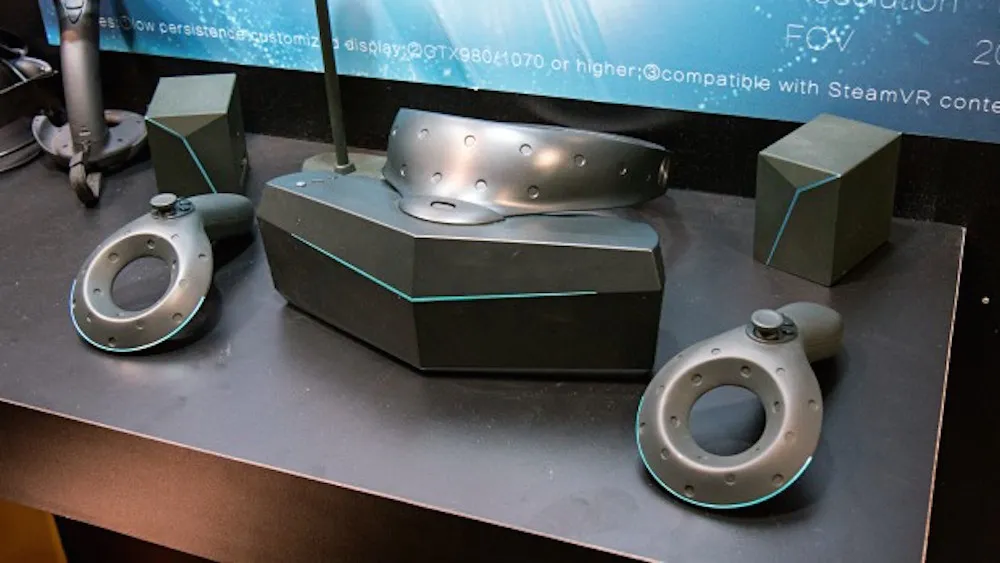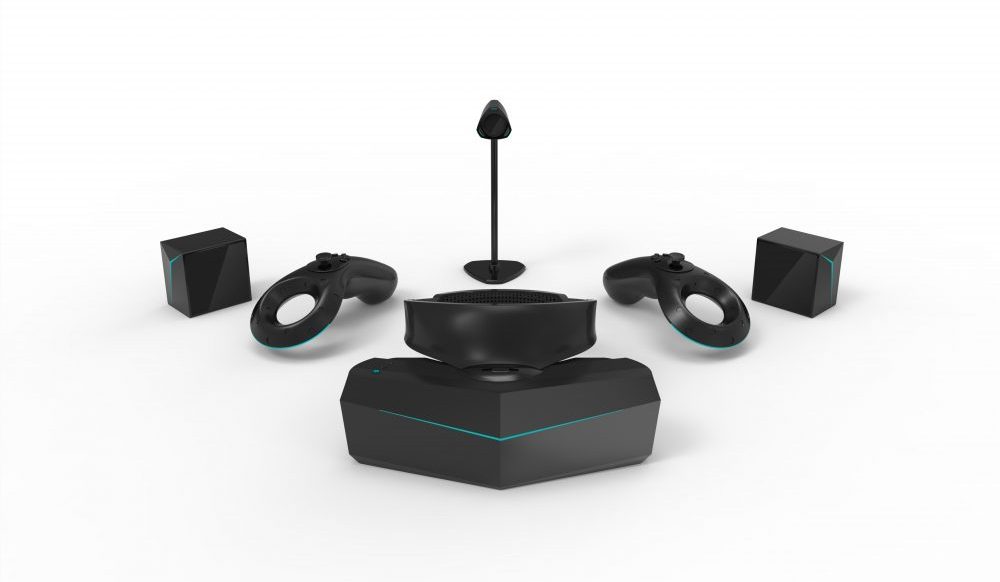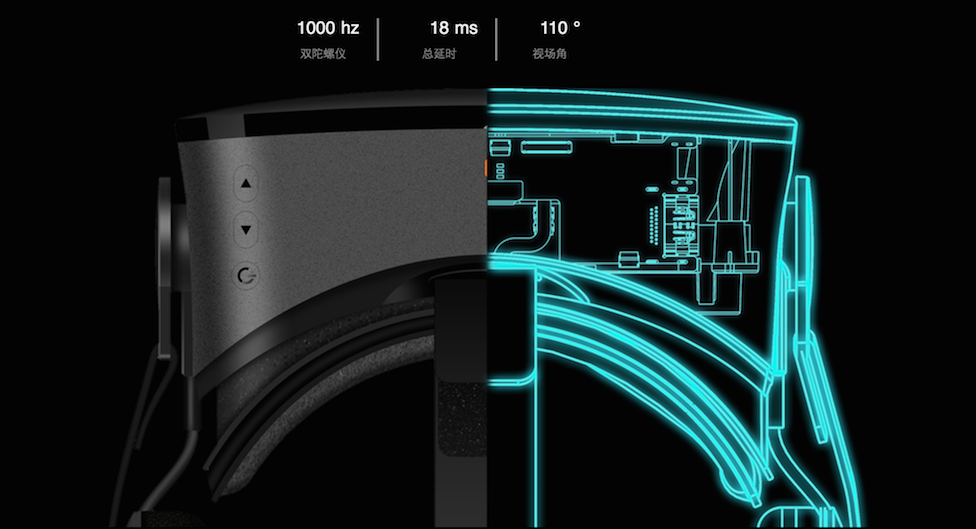Several weeks ago, we published a story about a company called Pimax. The scrappy startup was announcing its CES 2017 lineup and this year that included an 8K (4K per-eye) resolution, 200 degree field of view virtual reality headset. The implications of an HMD that powerful would be highly disruptive to the current VR industry, where resolution and FOV are two of the most difficult problems to solve and scale. We had the chance to try the Pimax headset for ourselves on the show floor at CES and what we found was a device that did have promise, but fell far below the mark of being a Vive or Rift-killer like we were promised.
Form Factor
The Pimax 8K is wide. It’s much wider than any other VR headset on the market today and is reminiscent of the Star VR headset that has moved quietly underground for some time now. The outer limits of the headsets horizontal plane extend a few inches past your head on either side and the overall visor curves in at an angle towards a central point. This makes the entire unit much more curved than either the Rift, Vive, or PSVR. The emphasis here is clearly on prioritizing that big FOV over a sleek or overtly comfortable design.
Fit
The 8K headset fits fairly well on the face and is surprisingly light for such a large headset. The ergonomics are sacrificed a bit however in favor of a wider FOV. The weight all seems to rest on the bridge of your nose and the end result is a new red mark to rival the infamous Oculus oval. The 8K is still in active development, however, so comfort levels could still be increased.
Performance
This is the big question: does the Pimax 8K deliver on the promise of a revolutionized display with industry changing resolution? The short answer is: no.
The long answer is that the Pimax HMD has a lot of promise but stumbles in a few unforgivable areas. The first is a complete lack of positional tracking. The Pimax representatives on site assured me that positional tracking would be added in by this spring, but for now you’re limited to head tracking only which is a far cry below what it will take to unseat the current kings of the VR hill.
The second problem is brightness. All the pixel density in the world doesn’t amount to much if they can’t be properly illuminated. The Pimax undoubtedly has the largest FOV of any VR headset I’ve ever tried, and there was some extra crispness to the image from what I could tell, but its screen was simply too dark to enjoy any of those innovations. The Pimax team took my findings to heart and said that a brighter backlight is expected to be incorporated into their next prototype.
Finally, Pimax headsets do not use OLED displays, instead they have chosen to use software algorithms to aggressively optimize more common LCD screens. They call this technique “brainwarp” and it does work. The LCD images moved with my head movements with less latency than one would expect with little to no bloom distortion (pixels that change color too slowly and cause a blurry image) at all.
Conclusion
The Pimax 8K headset was one of my great hopes for CES 2017 but, unfortunately, it’s still a bit too immature for the big leagues. The company will be launching a Kickstarter and raising additional funding soon and perhaps the extra capital can help them overcome some of these issues and create a more fully realized product. Until then, it’s like they say: if something seems too good to be true, it probably is.
Bonus: A New Challenger Appears
Also at the Pimax CES booth was their older, 4K model. This unit provides 2K resolution to each eye and also employs brainwarp software optimization. Whereas the 8K design was wide and bulky, the 4K edition was lightweight and very similar to the Oculus Rift’s form factor.
The LCD displays inside provided a crisper image than anything I’ve seen in VR personally. This model could have also benefited from a brighter backlight, and there was still no positional tracking, but I felt that the Pimax 4K gave me my best look yet at what a higher resolution future for VR could look like.
Pimax is an innovative and exciting company and while none of their products are ready to come out of the oven just yet, I for one am very excited to see what they can do with just a bit more cooking time.
Image Credits: Pimax, Golem, VRNerds
































